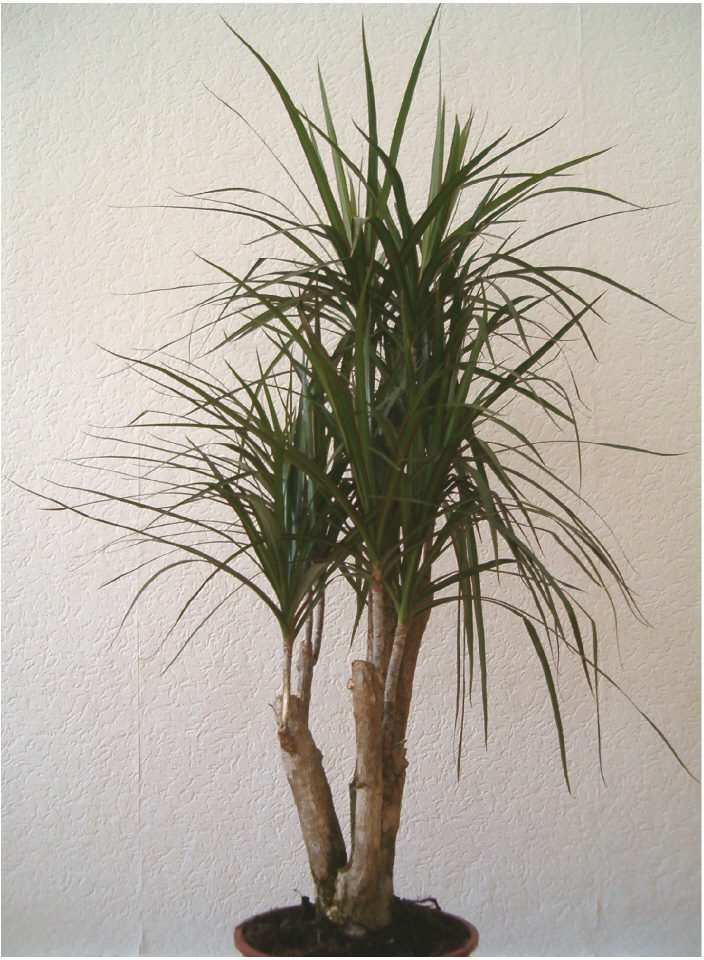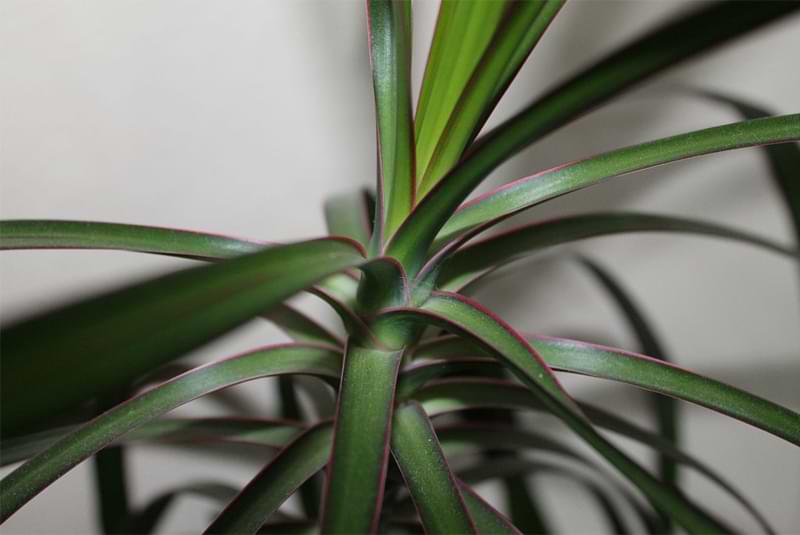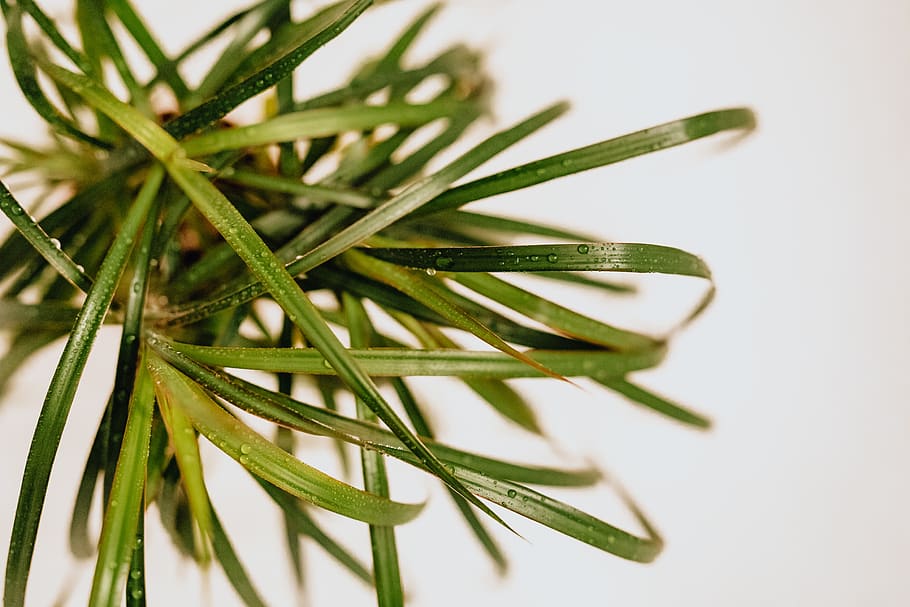Dracaena marginata is a popular indoor plant with long, slender green leaves edged with red. These plants are great for beginners because they’re drought tolerant and not at all fussy about their light conditions.
It’s the perfect combination of beauty and hardiness that makes a great houseplant!
Dracaena marginata is native to Madagascar and is also called the Madagascar dragon tree (or just dragon tree). This tree can grow up to 20 feet tall outdoors but won’t get taller than 6 feet indoors, especially if you prune it back. It’s a member of the dracaena family, which contains around 120 species of plants native to Africa, northern Australia, and South Asia.
This plant was also used in NASA’s famous Clean Air Study and was shown to help remove formaldehyde from indoor air!
Here’s how to care for your own dracaena marginata indoors.
The Ultimate Guide to Dracaena Marginata

Potting and Soil
Choose a pot with drainage that’s just a few inches larger than the root ball so the root system has room to grow. As for soil, buy or make a loamy, well-draining mix with a pH of 6-7.
Dracaena marginata is a slow-growing plant, so you’ll only need to repot every few years to keep this plant happy. If the soil gets compacted (hardened and pulling away from the edge of the pot) you might want to change it out for fresh soil.
Light
Dracaena marginata prefers bright, indirect light, but if you’re short on light in your home, no worries! This plant will also do just fine in lower light conditions, but it won’t grow as quickly or use water as efficiently. (So just be careful not to overwater.)
Keep your plant out of direct sunlight though, as this can burn the leaves.
Water
These plants are quite drought-resistant and don’t require a lot of water, so wait until the top half of the soil is completely dry before watering. Then, water thoroughly with distilled water, until water starts to run out the drainage holes at the bottom of the pot.
It’s important to use distilled water or another non-fluoridated water because fluoride and other salts in the water can cause the tips of dracaena’s leaves to get brown and crispy (and this goes for all species of dracaena). This is one of the most common issues with dracaena plants, but it’s an easy problem to fix!
Temperature and Humidity
Dracaena will be happy with temperatures in the 70-80 degree F. range, and they don’t require a lot of humidity. (See, we told you they were easy!) Keep your plant away from drafts and vents that could dry out the leaves, though.
Fertilizer
This plant grows mostly in the spring and summer, so you’ll want to fertilize a little during that time. A little Indoor Plant Food in your regular watering routine is perfect!
Pruning and Propagating
You can propagate your dracaena marginata with stem cuttings in water. They root fairly easily, but you can use a little Houseplant Propagation Promoter to help it along, provide nutrients, and protect your cutting from disease.
These plants are slow growers, so you won’t have too much pruning. But if your tree starts to get a little big or unruly, simply use clean shears to cut it back to your desired shape and size. Simple!

Pests
Dracaenas are tough plants, but they are susceptible to spider mites and occasionally mealybugs. If you notice insects, remove as many as you can by picking them off or spraying them off with a hose or kitchen faucet, then spray down the plant with Leaf Armor to protect the leaves and ward off insects.
Troubleshooting
Yellowing lower leaves – your plant probably needs more water.
Browning leaf tips – too much fluoride or other salts in the water. Switch to distilled!
Browning, soft leaves – your plant is cold or overwatered.
Note: While dracaena marginata is harmless to humans when ingested, it is extremely toxic to pets. If you have curious pets, choose a different plant or keep this plant where your pets can’t get to it.
Dracaena marginata is a great plant for beginners who want a striking statement plant to brighten up their space. Give one a try and let us know how it goes!




